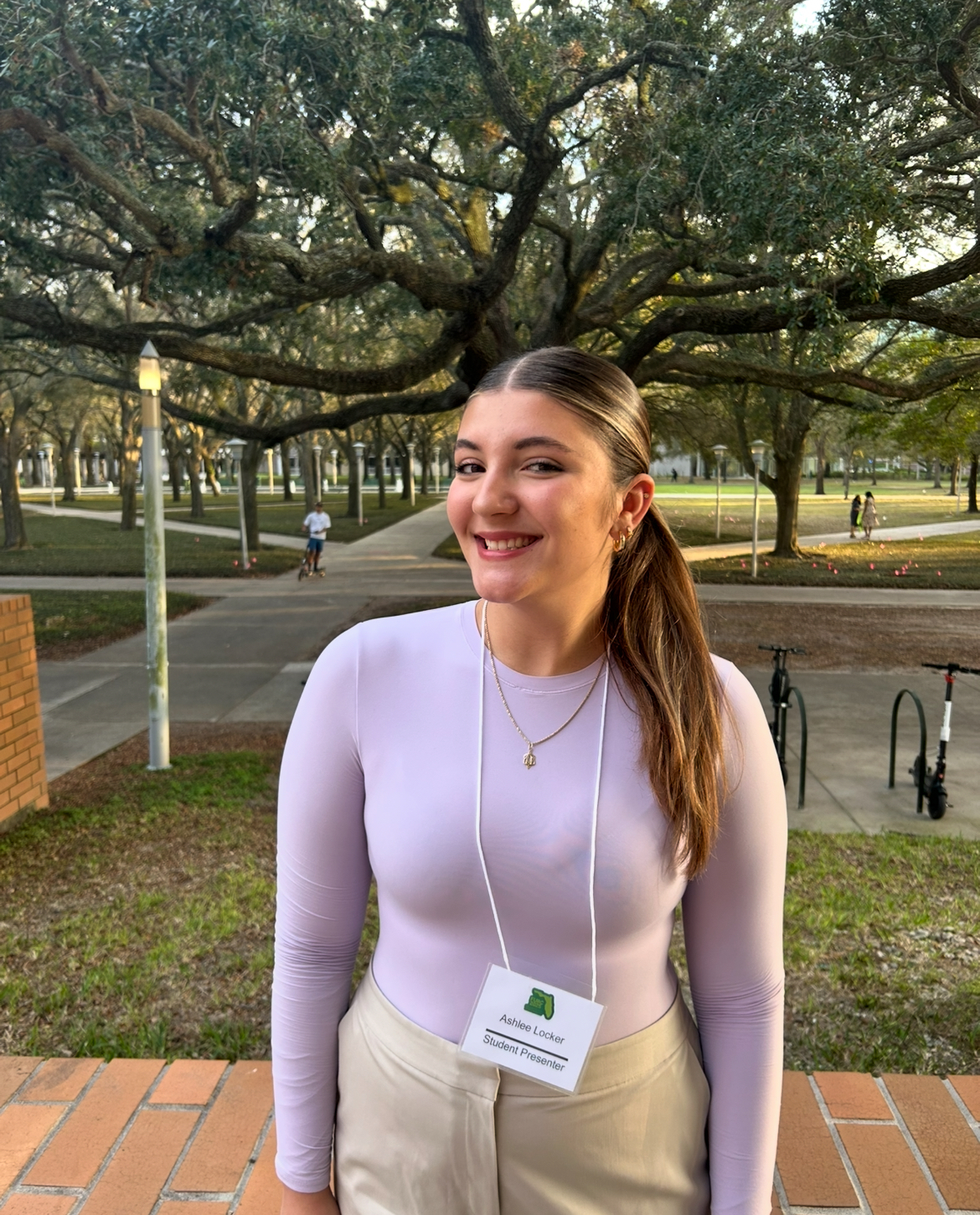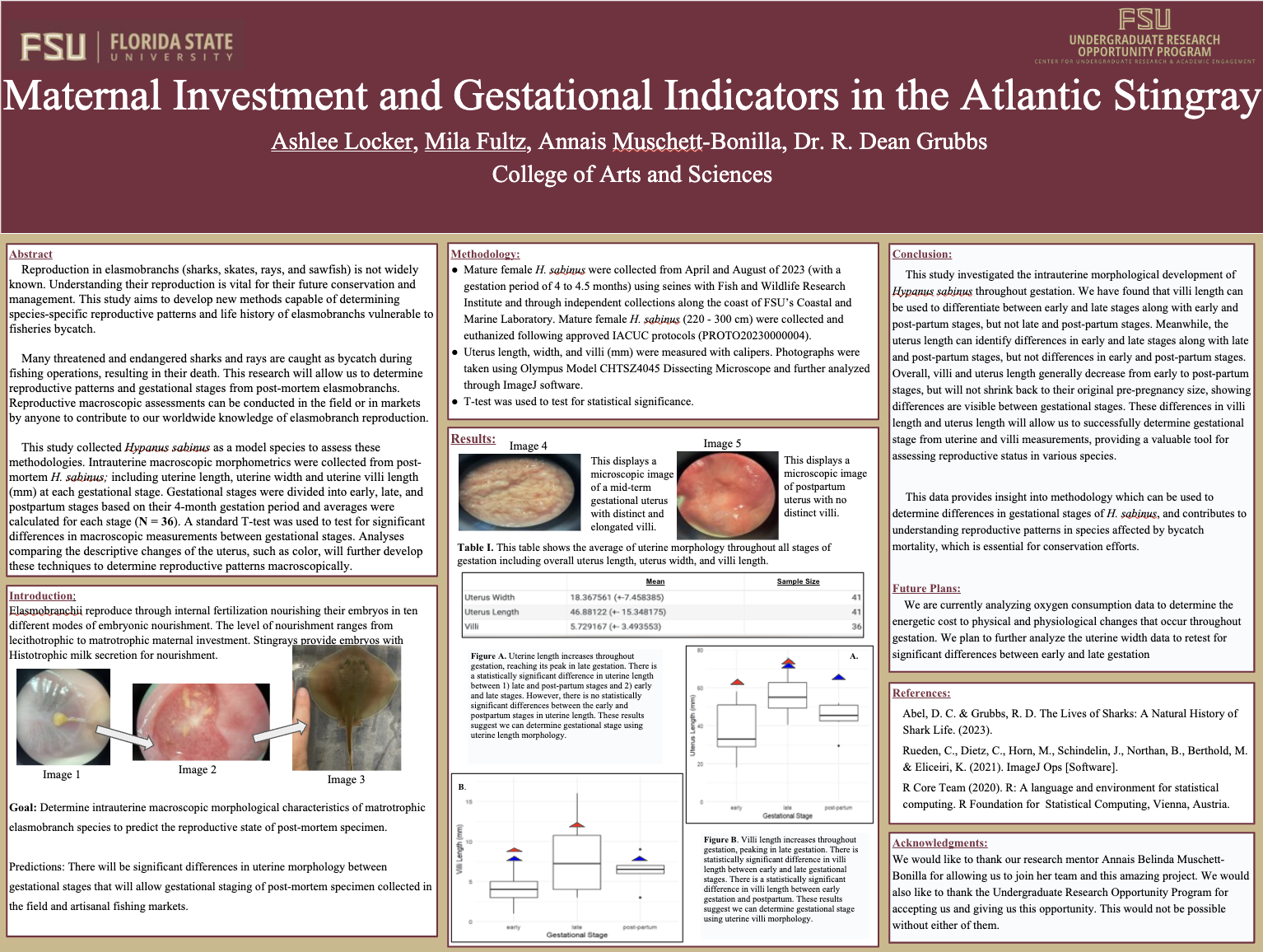Research Symposium
25th annual Undergraduate Research Symposium, April 1, 2025
Ashlee Locker Poster Session 2: 10:45 am - 11:45 am/ Poster #184

BIO
My name is Ashlee Locker, and I am from Wellington, Florida. I am a second-year undergraduate student at Florida State University, majoring in Biological Sciences. Originally a transfer student from the University of South Florida, I have developed a strong interest in veterinary medicine and reproductive biology. This year, I had the opportunity to work on a research project examining maternal investment and gestational indicators in the Atlantic Stingray. My involvement in this study has allowed me to gain hands-on experience in marine research at the Florida State University’s Coastal and Marine Laboratory. Conducting research has broadened my perspective and reinforced my passion for studying animal physiology. I aspire to become a veterinarian specializing in reproductive biology and am eager to continue expanding my knowledge through research and clinical experiences.
Maternal Investment and Gestational Indicators in the Atlantic Stingray
Authors: Ashlee Locker, Annais Belinda Muschett-BonillaStudent Major: Biological Sciences
Mentor: Annais Belinda Muschett-Bonilla
Mentor's Department: Biological Sciences Mentor's College: Florida State University Co-Presenters: Mila Fultz
Abstract
Reproduction in elasmobranchs (sharks, skates, rays, and sawfish) is not widely known. Understanding their reproduction is vital for their future conservation and management. This study aims to develop new methods capable of determining species-specific reproductive patterns and life history of elasmobranchs vulnerable to fisheries bycatch.
Many threatened and endangered sharks and rays are caught as bycatch during fishing operations, resulting in their death. This research will allow us to determine reproductive patterns and gestational stages from post-mortem elasmobranchs. Reproductive macroscopic assessments can be conducted in the field or in markets by anyone to contribute to our worldwide knowledge of elasmobranch reproduction.
This study collected Hypanus sabinus as a model species to assess these methodologies. Intrauterine macroscopic morphometrics were collected from post-mortem H. sabinus; including uterine length, uterine width and uterine villi length (mm) at each gestational stage. Gestational stages were divided into early, late, and postpartum stages based on their 4-month gestation period and averages were calculated for each stage (N = 36). A standard T-test was used to test for significant differences in macroscopic measurements between gestational stages. Analyses comparing the descriptive changes of the uterus, such as color, will further develop these techniques to determine reproductive patterns macroscopically.
Keywords: Stingray, Reproduction, Biology


